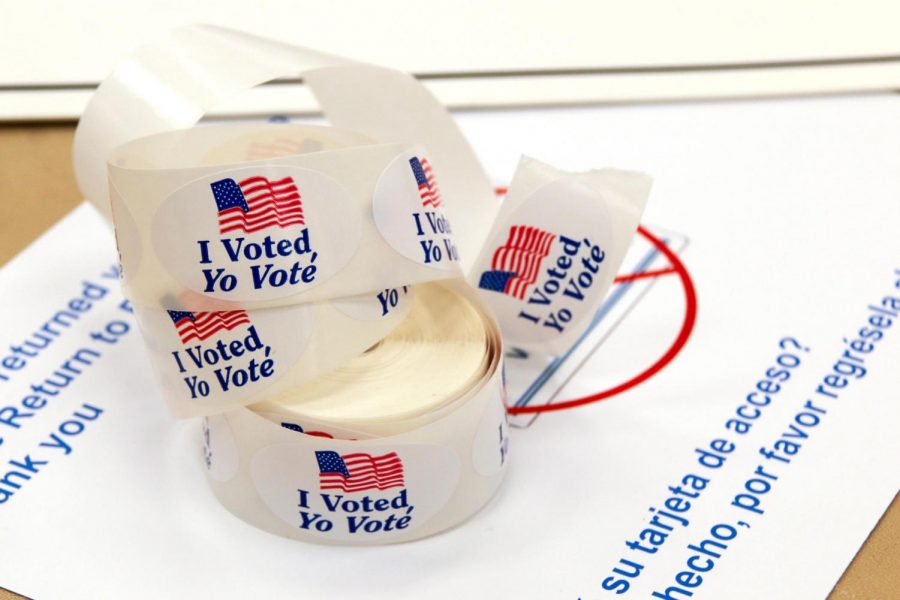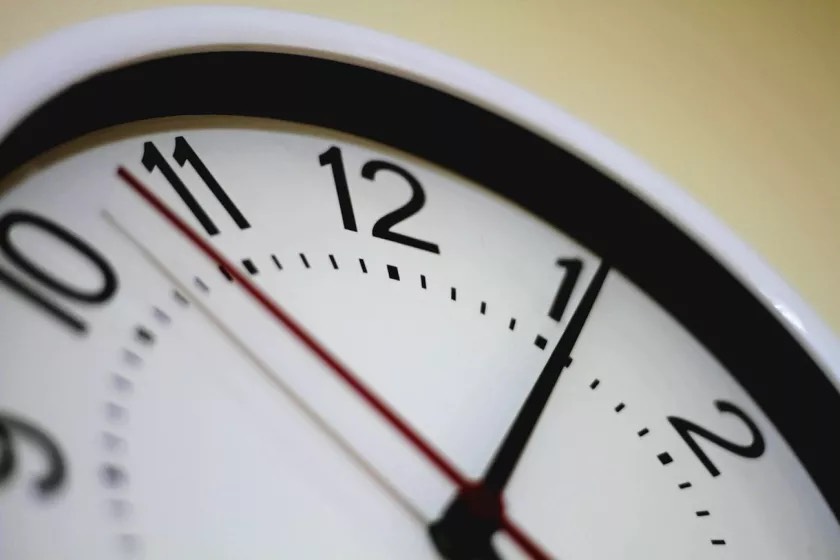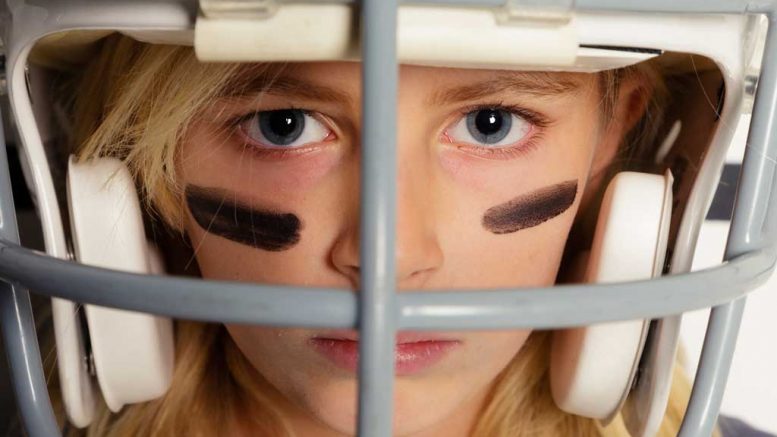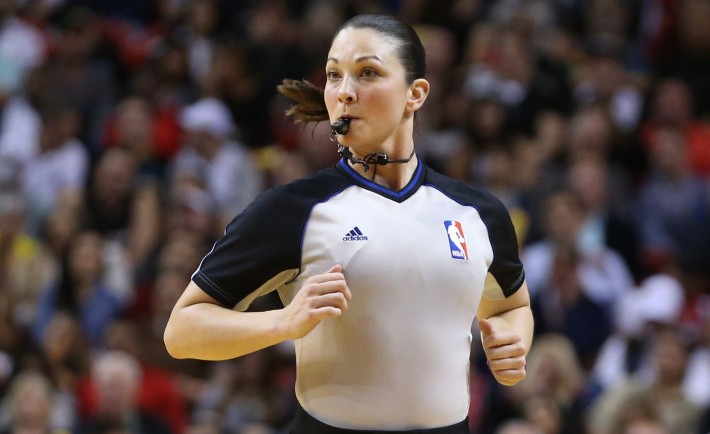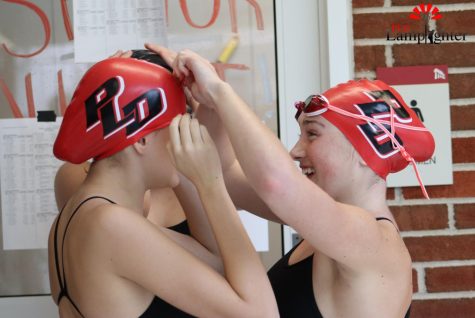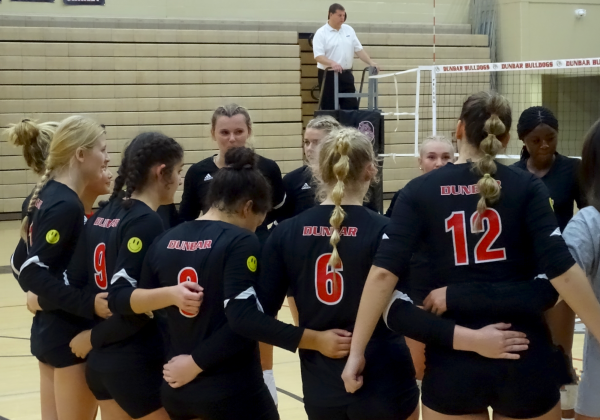Female Athletes Still Struggling for Equality
Although there have been historical fluctuations in the respect of women’s accomplishments in sports, it is still a struggle.
Creative Commons/news.schoolsdo.org
The signing of Title IX into law in 1972 opened the door to athletics for women and girls in sports, but it hasn’t been enough.
Male and female athletes have yet to maintain an equal playing field. Whether these biases come from expectations, familial roles, or physical and verbal treatment, it’s clear that men and women are held to different standards.
The conflict was temporarily leveled when Bobby Riggs, who according to Biography.com “had assumed an overly chauvinistic persona,” wanted to play the top female tennis players in the world.
In May of 1973, Riggs got what he wanted.
He easily beat 64 time Grand Slam champion Margaret Court. After this, Riggs continued his “Battle of the Sexes” and played Billie Jean King, the third most winningest female tennis player of all time. King fought to the end and beat him in straight sets 6-4, 6-3, 6-3.
Billie Jean King paved the way for female athletes by beating Riggs. According to her website, after beating the former number one ranked male tennis player in the world, she said, “I thought it would set us back 50 years if I didn’t win that match.”
Unfortunately, nearly 50 years later, there hasn’t been much progress–especially in high schools and colleges–but it’s not much better at the professional level.
After the 2016 World Cup, the United States Women’s National Soccer Team became prominent figures in the equal pay movement. Then, during the 2019 Women’s World Cup, the crowd began chanting “Equal Pay.”
The U.S women’s soccer team won its fourth World Cup title in 2019, becoming the first team to ever do so. Previously winning this prestigious tournament in ‘91, ‘99, ‘15, the women’s team has been far more successful than the men’s team, however, they still receive a salary roughly 38% less than their male counterparts.
Five prominent members of the United States Women’s National Soccer team filed complaints against the United States Soccer Federation: Carli Lloyd, Hope Solo, Alex Morgan, Megan Rapinoe and Becky Sauerbrunn.
The men’s team played in every world cup from 1990-2014 and their farthest run in the 2002 World Cup only brought them to the quarterfinals losing to #1 ranked Spain. The United States Women’s National Team brought these facts into the lawsuit.
“Female players have been consistently paid less money than their male counterparts. This is true even though their performance has been superior to that of the male players-with the female players, in contrast to male players, becoming world champions.”
CNBC did the math and reported, “If the mens’ and womens’ teams both won and played 20 friendlies in a year, the female players would earn a maximum of $99,000 which is $4,950 per game. To put that in perspective, the men would make $263,320 or $13,166 per game.”
The treatment of professionals trickles down to college and high school sports.
Junior Carmen Combs who plays soccer at Dunbar said, “I know a lot of people are passionate about [the movement]. The women’s national team has proven to be a better success than the men’s national team so equal pay should definitely be taken into consideration for the women’s team.”
And it’s not just girls who feel this way.
Senior soccer player Pablo Ortiz said, “I think it is wrong that women aren’t getting paid as much as they should, but also they don’t have as much soccer televised as the men do.”
There are many other sports that women play and feel like their pay should be more equal with the men who play that sport. In golf, for example, there is a big gap in earnings between tournament winnings depending on the gender of the winner.
ESPN reported that “despite the raise, the KPMG Women’s PGA Championship’s purse of $3.5 million is only 35 percent of the men’s 2015 PGA Championship purse of $10 million.”
Dunbar golfer Maddie Cecil, who recently committed to Murray State, said, “I believe it’s based on viewers. It’s just like in surgery, the more you get done, the more you get paid. Pay for golf is always going to be based on support from viewers and while it’s sad that women’s golf is not viewed higher, the PGA tour is advertised more than the LPGA. It all comes down to who can advertise and gain more support.”
While many agree with this perspective, it isn’t exactly accurate in every case.
According to the Wall Street Journal, from 2016 to 2018 the United States Women’s National Team brought in approximately $50.8 million in revenue while the men’s team generated $49.9 million. The four-time World Cup champions on average make $8,200 less than the mens’ team, even with bringing in $1.9 million more.
In women’s basketball, it’s no different.
Dunbar basketball player Tanaya Cecil said, “I believe men should get paid more than girls for basketball because more people do attend men’s games and purchase more men merchandise. Though I don’t believe there should be such a big gap because women are working just as hard as men and spending so much time on the sport they love.”
Admittedly this is likely because the NBA generates a significantly higher annual revenue than the WNBA.
“In the 2018 WNBA draft, Wilson of the Las Vegas Aces earned $52,564 in her first season. In contrast, to prove the difference, Deandre Ayton who is in his first year as well playing for the Phoenix Suns made $6.8 million.”
Lack of attendance at women’s events is certainly a factor, but not in all sports. In tennis, it’s also lack of revenue.
From 2010 to 2014, the women’s US Open final drew a larger audience than the men’s final mainly due to Serena Williams’ appearances in four of those finals. Novak Djokovic, one of the top male tennis players in the world, was the one making $42.4 million less.
Serena Willaims–who was the highest-paid female tennis player– has winnings topping at $88.6 million. Meanwhile, Novak Djokovic passed up Rodger Federer and Serena Williams with his highest career winnings. He is now the highest-paid tennis player, having winnings topping $131 million.
According to the New York Times, “The tournament, in which the United States Tennis Association owns a majority stake, pays the women only 63 cents on the dollar as compared with the men. Last year, Roger Federer received $731,000 for defending his title at the tournament, while Serena Williams received $495,000 for defending hers hours later.”
Not only is women’s pay less than men’s, but female athletes are also treated much differently.
For instance, Serena Williams’ life was threatened during the 2018 Grand Slam. Just before the tournament started, the French Tennis Federation produced new dress code restrictions preventing Williams from wearing a “catsuit.” She wore this outfit specifically to prevent blood clots post-pregnancy, but the French Tennis Federation’s President decided it was inappropriate, and declared new dress code rules, banning Williams’ catsuit.
Singling out Williams’ special outfit, he said “It will no longer be accepted. One must respect the game and the place.”Days later, disciplinary actions were taken against professional female tennis player Alizé Cornet when she removed her shirt on the court after realizing it was on backward.
In contrast, during the 2018 season, professional male tennis player Dominic Theim continuously smashed his racket after losing a match, yet he received no discipline. Also, Sky Sports even said, “Broke it in style, didn’t he?” The media also began to quip that he should have given the broken racket to a fan.
On the other hand, in the 2018 Open final, Serena Williams was deducted a point because the chair umpire claimed she was being coached through hand signals. She immediately became angry and called the umpire a “liar” and a “thief,” and she also smashed her racket. According to USA Today, Williams was fined $17,000 for her actions, while Dominic Theim suffered no penalty.
In these actions, the tennis federation demonstrated the difference in the way they treat men and women. If a woman is disciplined for turning her shirt around, why is a man not for destroying his racket and “losing his cool?”
Female athletes also endure smaller crowds because some fans believe they’re “not as good,” even if they have a higher record.
At Paul Laurence Dunbar High School, the girls’ basketball team is a three-time district champion, but they have little following. Attendance at the girls’ games are so low, the pull-out student section is left retracted. The bleachers are empty except for parents and families. For boys games’, on the other hand, the student section is overflowing and the stands are packed even though they haven’t had a successful season since 2016.
Another sport that is in the same position as girls basketball at Paul Laurence Dunbar is softball.
Senior softball player Yanna Marrow, who recently committed to the University of Pittsburgh said “I’d definitely say from a high school standpoint we aren’t as valued as baseball, but that’s generally how it is for most girls sports. When people do come and support, they are often surprised at how much faster the pace of our game is.”
On the other hand, the “Battle of the Sexes” tennis match between Bobby Riggs and Billie Jean King is one of the most-watched sporting events of all time, raking in 90 million viewers.
On June 23, 1972, President Richard Nixon signed one of the largest steps towards gender equality into law.
Title IX was enacted to end gender discrimination in sports, and states “No person in the United States shall, on the basis of sex, be excluded from participation in, be denied the benefits of, or be subjected to discrimination under any education program or activity receiving Federal financial assistance.”
At Dunbar, the athletic department makes every effort to maintain equality for their male and female athletic programs.
“All athletes here are treated the same, coaches are paid the same, and we have seen a higher attendance at girls’ games than in the past. Deep down, I think in some situations female athletes are treated unfairly from the arenas they play in or the training tables where they eat, and possibly the mode of transportation to and from games,” Dunbar’s Athletic Director Jason Howell said.
“Hopefully, in the future, it will be truly equal, and I don’t think that it is truly equitable in some locations, but for us it is equal.”

I'm Teagan Garrison and I have been on Lamplighter for two years. I have been the Torch Podcast Editor for most of my time on staff, and can't wait to...

My name is Mike Marshall and this is my third year on the PLD Lamplighter staff. In my first year, I was a staff reporter and mostly kept up with schedules...

I’m Allison O’Hara and I am a Senior at Dunbar High School. This year will be my second year involved with Lamplighter. Last year, I was Assistant...





